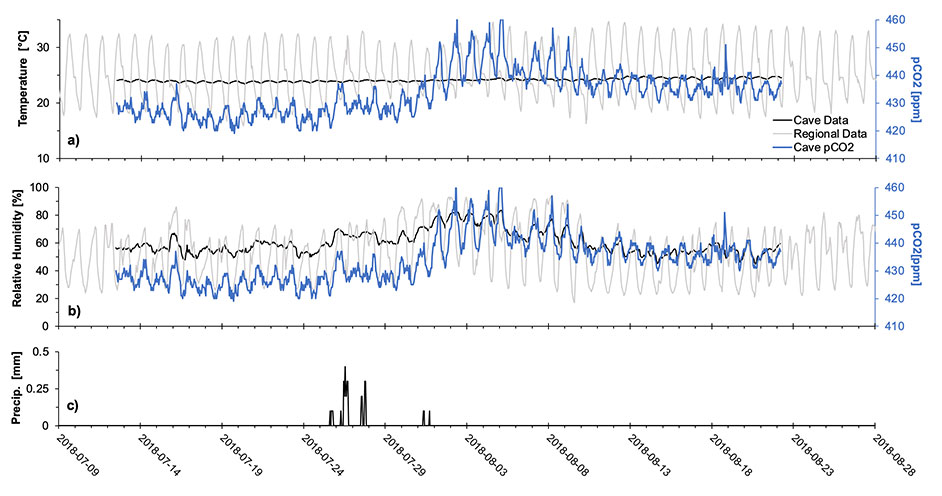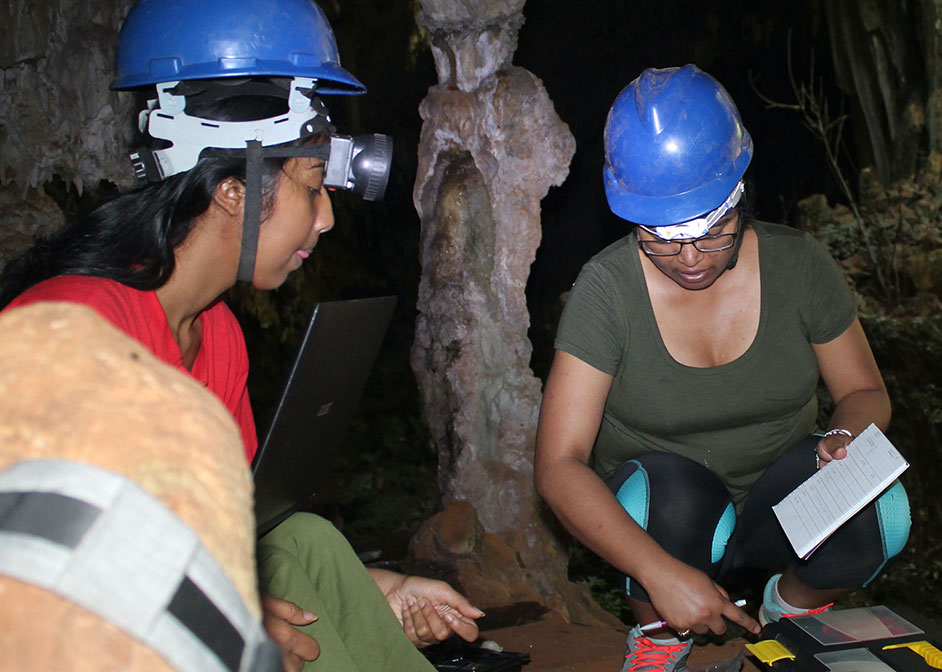Anjohibe Cave Site of Monitoring Study in Madagascar
Ny Riavo Voarintsoa, a new faculty member at the University of Houston Department of Earth & Atmospheric Sciences, and her research team launched a monitoring study in Anjohibe Cave, a big cave located in the remote village of Mahajanga, called Antanamarina, in northwestern Madagascar under the PALEOMADA project. PALEOMADA stands for paleoclimate reconstruction in Madagascar.

The monitoring investigated two major components of the cave as a key to interpret paleoclimate records produced from stalagmites.
“Caves are intimately connected with their surrounding environment, either via air exchange or via the water that percolates through the epikarst, which is commonly fed by rainfall and drips inside the cave to eventually deposit CaCO3 in the form of speleothems,” Voarintsoa said.
Speleothems are secondary deposits in caves, and they are very common in limestone-rich outcrops. They are the product of dissolution of this host limestone/carbonate bedrock by acidic water and the reprecipitation of that solution into new carbonate deposits when it equilibrates with the cave atmosphere, forming the various decorative features found in caves, such as stalagmites and stalactites.
“Stalagmites, the upgrowing mounds of sediments from the floor of the cave, are one of the most common tools we use to reconstruct paleoclimate and paleoenvironment because they are capable of recording the changes experienced in the cave’s surrounding environment around the time they form,” she said.

This is specifically possible because of their geochemical properties, such as stable isotopes (e.g., carbon and oxygen) and other elements composition, reflecting the environmental conditions at the time of their deposition. It is critical to understand how caves respond to the region’s climate and their surrounding environments.
First, Voarintsoa and the team monitored the variations in the physico-chemical properties of the cave atmosphere (such as its pCO2, the relative humidity, and the temperature). Second, they investigated the geochemical properties of the cave drip water (such as its pH and electric conductivity) and further analyzed in the lab other geochemical signatures (such as the isotope and the elemental composition of the drip water).
Their efforts have led to three significant conclusions, the results from which are published in the Science of the Total Environment.
First, air exchange between the cave and the region’s atmosphere is fast, and the cave’s internal parameters closely vary with the regional climatology.
Second, rainfall to drip signal transfer is in contrast not immediate, and it can take few months to one season for the signals to be detected in the drip water. Such delay is due to the "epikarst storage effect."
Lastly, the deposition of stalagmite is inferred to occur late in the dry austral winter season, during which prior carbonate precipitation in the ceiling of the cave and in the epikarst was also detected in the drip signal.
Since the growth of stalagmites is influenced by numerous cave-specific factors, this study, although preliminary, indicates that Anjohibe Cave drip waters are capable of registering changes in its surrounding environment. Voarintsoa is currently writing another research proposal to continue these efforts by conducting a longer monitoring study to constrain the timing and the mode of transfer and to calibrate newer proxy that her research teams plans to develop at the University of Houston.
“Caves are an excellent natural laboratory for understanding the transfer processes of the region’s environmental signals to speleothems,” Voarintsoa said.